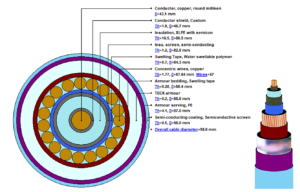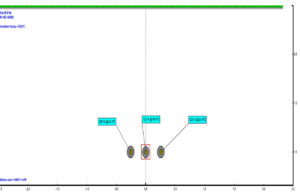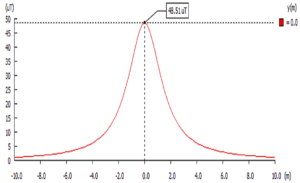Electric cables play a very important and irreplaceable role in the power system. From the power generation, transmission and distribution system, electric cables help connect devices together and transmit power from power plants or power sources, thereby distributing electricity to power consumption loads to serve production and business activities and human living needs. Nowadays, with the development of electric technology, electric cables are researched and manufactured with many types, many voltage levels with higher quality, durability and reliability of power supply, especially underground cables and submarine cables. Accordingly, the management and operation of electric cable systems always pose great challenges to ensure reliability and stability of power supply.
♦ The load carrying capacity or current carrying capacity of a cable is the maximum current that the cable can carry continuously under operating conditions without exceeding the rated temperature of the cable. In operation, electric cables are greatly affected and impacted by many factors that reduce the load carrying capacity as well as increase the temperature, causing heat and damage to the cable. The influencing factors come from many different agents including:

– Cable conductor size
– Cable construction materials and properties
– Cable layout and installation
– Ambient temperature
– Thermal resistivity of soil and cable covering material
– Cable burial depth
– Cable construction and installation materials
– Solar radiation
– Wind speed, ventilation types
♦ The power cable analysis process is performed based on detailed cable settings based on actual data from cable data information, environmental condition data, cable installation plan data including cable modeling settings, installation condition parameters, load charts and curves, installation plan, detailed cable installation data. The settings are performed in detail and fully to ensure accurate and reliable analysis results based on compliance with IEC, IEEE, CIGRE, Neher-Mcgrath standards. When performing power cable analysis, the following data information is provided for power cable evaluation:
– Reliable results from cable analysis will help power system operators and investors have a solid basis to make quick decisions in selecting and arranging cable installations to optimize economic and technical aspects.
– Calculate the maximum load capacity within the cable temperature rating limit or the cable temperature increase corresponding to each load current set according to stable, transient, and emergency modes.
– Provide other numerical information such as loss, resistance, impedance, magnetic field, short-circuit current, induced voltage, and voltage drop.


♦ Applicable standards:
– IEC 62087, IEC 60228, IEC 60853: Standards for power cable calculations
– Neher-Mcgrath standard: Standards for generator stability analysis in power systems
– CIGRE standard

